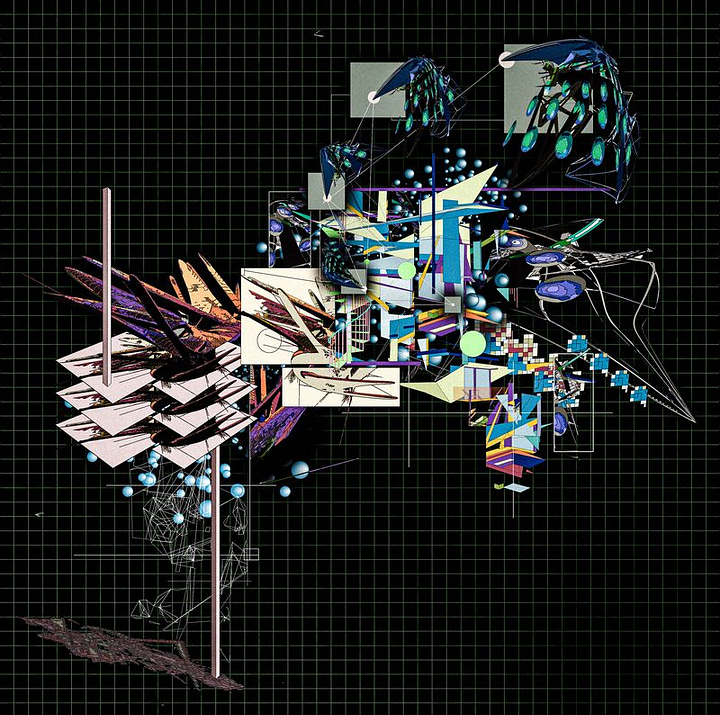A little more bloodletting
Two Substackers and an artist walk into a bar... + a note on triangulated reading
I’ve noticed that when I send things out irregularly, like I’m doing now (a piece written for a Sunday out on a Tuesday), I hemorrhage subscribers.
At first, this bothered me a little. Seeing the drop gives you the same dull feeling as getting a 10-word rejection from a journal you’ve sent your work to. (“We don’t want to publish your work, thank you, goodbye.”) And yet, I can’t help but think that bloodletting my own readership is good in some way, even if I can’t say exactly how (like those doctors during the enlightenment that still put leaches on their patients even if they no longer themselves quite believed it was possible to balance anything like “humours” in the body…).
However much anyone likes a given Substack, there is always another level to things where, no matter what, you’re still reading an email.
I personally prefer to read Substacks on my computer (I hate reading on my phone). I’ve had two consistent favorites lately:
The first is Getting Spooked, a Fortean, parapolitical newsletter that manages to prove both really interesting and informative while still keeping its head on straight. See, for example, Manifest(uf)o: Thoughts on the Perpetual UFO Psyop/Scam and its attendant installments. Otherwise, I recommend the series on Indrid Cold and the weird Mothman stuff that went on in Point Pleasant, West Virginia in the 1960s.
I read this latter series at the tail-end of a very snowy Winter while living in a rented house in a town of 400 people. It made me close some curtains in the house that I usually left open.
Something else I have to mention: The art for Getting Spooked is amazing in its own right. It’s by Robert Voyvodic.
His stuff makes El Lissitzky look—I don’t know, somehow too complete, like an unexploded bomb. Voyvodic’s art, on the other hand, is the bomb as it is exploding, tearing space itself into gorgeous shreds even as these shreds attempt to reconstitute themselves into new, strange forms. Check out his work. It’s amazing.


Voyvodic is also the creative director of APOCALYPSE CONFIDENTIAL,
a web magazine of edgy extrapolations, fringe fascinations, occult obsessions, risky ruminations, and aberrant associations […] obsessed with the underworld, both demonological and criminological.
The second Substack I want to mention is Out of your Element, which I would describe as a newsletter of diaristic essays. They’re always about 800 words (or so I would estimate), but they feel more expansive than that, like a simultaneously defined and yet diffuse cloud. I recommend this most recent piece, Swiss Haze. I’d include my favorite passage from it here, but it would be too long (fourth paragraph down) —I’d just read the whole thing if I were you.
The style of Out of your Element is pared down, honest and—this is not a word I would normally use, and maybe I’m using it in a weird sense—humanistic. I’m always surprised somehow by the endings, which leave you feeling as if you had caught something a little heavy during a game of catch—and when you look up, the person who tossed it at you isn’t standing there anymore.
(Incidentally, the name of the Out of your Element used to be Simplicissimus, taken, I assume, from the Grimmelhausen book, which makes me remember that I’d really like to read that this summer, along with any other old picaresques I can get my hands on.)
I say this without irony or sarcasm: if you ever unsubscribe from COM-POSIT, at least replace it with something good—e.g., some of the great work included above.
Book-wise, I’ve been reading:
The first division of Heidegger’s Being and Time, translated by Joan Stambaugh
A Guide to Heidegger’s Being and Time, by Magda King
Martin Heidegger: Between Good and Evil, by Rüdiger Safranski (only up to the point just after which he “finishes” Being and Time)
The Koran, as translated by N.J. Dawood
Some poetry from a 1000-page Russian poetry anthology that I got from a basement library sale (only started at the beginning after skipping ahead to the Mayakovsky section)…
All of the Heidegger stuff went really well alongside both Annihilation and Authority by VanderMeer (I’m saving Acceptance and Absolution for later in the summer): The notion of Dasein, the non-human a priori of the “human,” the foregrounding of potentiality/possibility over actuality, the emphasis on uncanniness (or unheimlichkeit)… the fictional instantiation of a concept or notion is always illuminating when juxtaposed and thrown up against a particularly difficult analysis of similar (but, in the end, incommensurable) concepts and notions. (One only really learns through difference.)
If the job of criticism—by which I always mean something like Walter Benjamin’s Kunstkritik—is to bring out the involuted and germinating philosophical world there within a work of art, clarifying and raising it into a a new light, then it is often one of the (many) functions of fiction to lead us along a philosophical book as a texturing. Fiction provisionally textures out philosophy.
Novels (and in another way, poetry) can give us parallel worlds against which we might try to think certain texts, unravel and explore certain ideas, bouncing back and forth in a weird triangulation of worlds: the world as that which we live out, the world as imagination (fiction) and the world as thought (a philosophical text).
Until next one,
Zane





